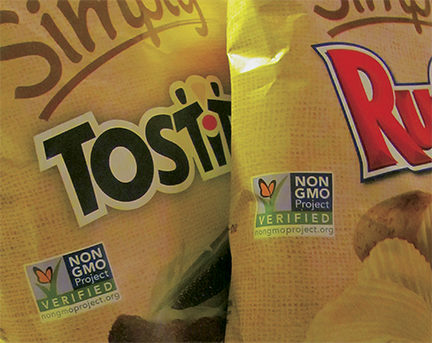In just 11 years, the Non-GMO Project has grown from a grassroots initiative at a Berkeley, California natural food store to one of the fastest-growing food labeling claims in the U.S. with nearly 40,000 verified products generating more than $19 billion in sales. Expanding beyond natural and organic foods, the Project’s iconic butterfly logo is now seen on familiar mainstream products such as Post cereals, Gerber baby foods, and Domino sugars, to name a few.
With this growth, more non-GMO certification/verification programs are entering the market. These include NSF’s Non-GMO True North, A Greener World’s Certified Non-GE, and Nutrasource Diagnostics’ IGEN Program, among others. The U.S. Department of Agriculture has expanded its Process Verified Program to accommodate non-GMO claims. Two GMO testing labs, Eurofins and SGS, also offer non-GMO verification programs.
The emergence of other non-GMO verification programs was inevitable, says Sandy Kepler, president of Non-GMO Global, a non-GMO certification consulting firm.
“There are and will continue to be competing standards entering the marketplace,” says Kepler, who played a major role in launching the Non-GMO Project in 2005.
But the validity of some of these non-GMO certification programs may be questionable.
“A huge business opportunity is here, and it opens the door for less rigorous standards,” says Megan Westgate, executive director of the Non-GMO Project.
Standard must be achievable and meaningful
According to Kepler, trustworthy non-GMO certification strikes a balance between being achievable for the company receiving the verification and meaningful for consumers in the marketplace.
Kepler says the Non-GMO Project and NSF’s True North programs both meet that criterion. In fact, Whole Foods Market accepts those programs for validating non-GMO claims on products sold it its stores.
There are similarities and differences between the Non-GMO Project and True North standards. Both programs have GMO thresholds of 0.9 percent for food and 5 percent for feed. On the other hand, True North accepts organic certification as evidence of compliance with their non-GMO standard, while the Non-GMO Project does not. The Non-GMO Project requires DNA-based PCR testing on food products while True North allows either PCR or protein-based strip tests to be used.
According to Westgate, one of the biggest advantages of the Non-GMO Project is that the standard was developed with and continues to receive input from industry stakeholders.
“Other standards don’t have a clear pathway for stakeholder input,” she says.
“Entering a new paradigm”
Collaboration with the food industry on non-GMO standards is critical, says Kepler.
“The key knowledge is within the industry; we can’t expect certifiers to be experts in manufacturing processes across multiple industry sectors,” she says. “Stakeholder input is essential.”
This collaboration will need to increase as more big companies enter the non-GMO market.
“We have entered a new paradigm since the founding of the Non-GMO Project,” Kepler says. “Once primarily a natural food industry initiative, today we find non-GMO production an important choice of multi-national, industry giants. With the emergence of these new stakeholders, an important source of knowledge and experience has become available to certifiers.”
Westgate also confirms the growing interest in non-GMO verification from larger companies. “We are seeing more involvement from major consumer packaged goods manufacturers like Frito Lay, Crisco, and Tropicana,” she says.
As more large companies go non-GMO there will be a need to increase efficiency in the verification process.
“A company with mature quality systems designed to avoid GMOs should be recognized as compliant without excessive certifier oversight and restrictions,” Kepler says.
She also sees the need for collaboration among the increasing number of food certification programs such as non-GMO, organic, and gluten-free, among others.
“With the growing transparency trend and many different label claims, the certification industry has to become more efficient,” Kepler says. “It’s not sustainable to continue to add more standards and more audits to an industry. There should be some reciprocity for certain parts of each certification.”
“Have to have high standards”
Ultimately, Kepler doesn’t view the growing number of competing non-GMO verification programs as a bad thing.
“Companies that choose certification to a meaningful standard can show how their competitor’s non-GMO claims are meaningless,” she says. “Utilizing the more rigorous standard becomes a marketing advantage, driving the industry as a whole toward better standards.”
Sarah Krol, global managing director, food safety at NSF International, also sees more non-GMO verification options as positive.
“Having multiple solutions provides an opportunity for more voices and broader consensus as the market for non-GMO products develops and grows,” she says. “As many more organizations pursue and earn certification to any non-GMO standard, it will help grow the number of certified non-GMO products available to the public.”
Whatever happens in the future with non-GMO standards, they need to be rigorous and meaningful for consumers, says Corinne Shindelar, executive director of the Independent Natural Food Retailers Association.
“We have to have high standards,” she says. “We can’t afford to put something on the shelves that isn’t truly non-GMO. By keeping standards strong, we will maintain consumer trust and confidence in the products we make and sell.”









